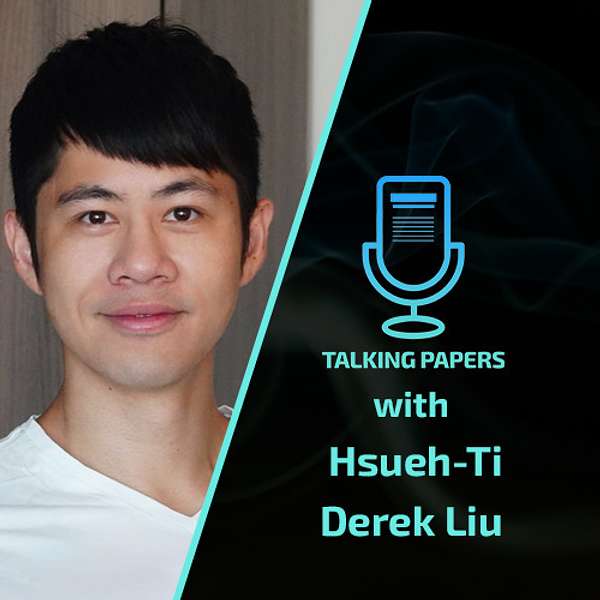
Talking Papers Podcast
🎙️ Welcome to the Talking Papers Podcast: Where Research Meets Conversation 🌟
Are you ready to explore the fascinating world of cutting-edge research in computer vision, machine learning, artificial intelligence, graphics, and beyond? Join us on this podcast by researchers, for researchers, as we venture into the heart of groundbreaking academic papers.
At Talking Papers, we've reimagined the way research is shared. In each episode, we engage in insightful discussions with the main authors of academic papers, offering you a unique opportunity to dive deep into the minds behind the innovation.
📚 Structure That Resembles a Paper 📝
Just like a well-structured research paper, each episode takes you on a journey through the academic landscape. We provide a concise TL;DR (abstract) to set the stage, followed by a thorough exploration of related work, approach, results, conclusions, and a peek into future work.
🔍 Peer Review Unveiled: "What Did Reviewer 2 Say?" 📢
But that's not all! We bring you an exclusive bonus section where authors candidly share their experiences in the peer review process. Discover the insights, challenges, and triumphs behind the scenes of academic publishing.
🚀 Join the Conversation 💬
Whether you're a seasoned researcher or an enthusiast eager to explore the frontiers of knowledge, Talking Papers Podcast is your gateway to in-depth, engaging discussions with the experts shaping the future of technology and science.
🎧 Tune In and Stay Informed 🌐
Don't miss out on the latest in research and innovation.
Subscribe and stay tuned for our enlightening episodes. Welcome to the future of research dissemination – welcome to Talking Papers Podcast!
Enjoy the journey! 🌠
#TalkingPapersPodcast #ResearchDissemination #AcademicInsights
Talking Papers Podcast
Lipschitz MLP - Hsueh-Ti Derek Liu
In this episode of the Talking Papers Podcast, I hosted Hsueh-Ti Derek Liu to chat about his paper "Learning Smooth Neural Functions via Lipschitz Regularization”, published in SIGGRAPH 2022.
In this paper, they took on the unique task of enforcing smoothness on Neural Fields (modelled as a neural network). They do this by introducing a regularization term that forces the Lipschitz constant of the network to be very small. They show the performance of their method on shape interpolation, extrapolation and partial shape reconstruction from 3D point clouds. I mostly like the fact that it is implemented in only 4 lines of code.
Derek will soon complete his PhD at the University of Toronto and will start a research scientist position at Roblox Research. This work was done when he was interning at NVIDIA. During our chat, I had the pleasure to discover that Derek is one of the few humans on the plant that has the ability to take a complicated idea and explain it in a simple and easy-to-follow way. His strong background in geometry processing makes this paper, which is well within the learning domain, very unique in the current paper landscape. It was a pleasure recording this episode with him.
AUTHORS
Hsueh-Ti Derek Liu, Francis Williams, Alec Jacobson, Sanja Fidler, Or Litany
ABSTRACT
Neural implicit fields have recently emerged as a useful representation for 3D shapes. These fields are commonly represented as neural networks which map latent descriptors and 3D coordinates to implicit function values. The latent descriptor of a neural field acts as a deformation handle for the 3D shape it represents. Thus, smoothness with respect to this descriptor is paramount for performing shape-editing operations. In this work, we introduce a novel regularization designed to encourage smooth latent spaces in neural fields by penalizing the upper bound on the field's Lipschitz constant. Compared with prior Lipschitz regularized networks, ours is computationally fast, can be implemented in four lines of code, and requires minimal hyperparameter tuning for geometric applications. We demonstrate the effectiveness of our approach on shape interpolation and extrapolation as well as partial shape reconstruction from 3D point clouds, showing both qualitative and quantitative improvements over existing state-of-the-art and non-regularized baselines.
RELATED PAPERS
📚Neural Fields (collection of works)
📚Sorting Out Lipschitz Function Approximation
LINKS AND RESOURCES
📚 Paper
💻Code
To stay up to date with Derek's latest research, follow him on:
👨🏻🎓Personal Page
👨🏻🎓Google Scholar
Recorded on May 30th 2022.
CONTACT
If you would like to be a guest, sponsor or just share your thoughts, feel free to reach out via email
🎧Subscribe on your favourite podcast app: https://talking.papers.podcast.itzikbs.com
📧Subscribe to our mailing list: http://eepurl.com/hRznqb
🐦Follow us on Twitter: https://twitter.com/talking_papers
🎥YouTube Channel: https://bit.ly/3eQOgwP
